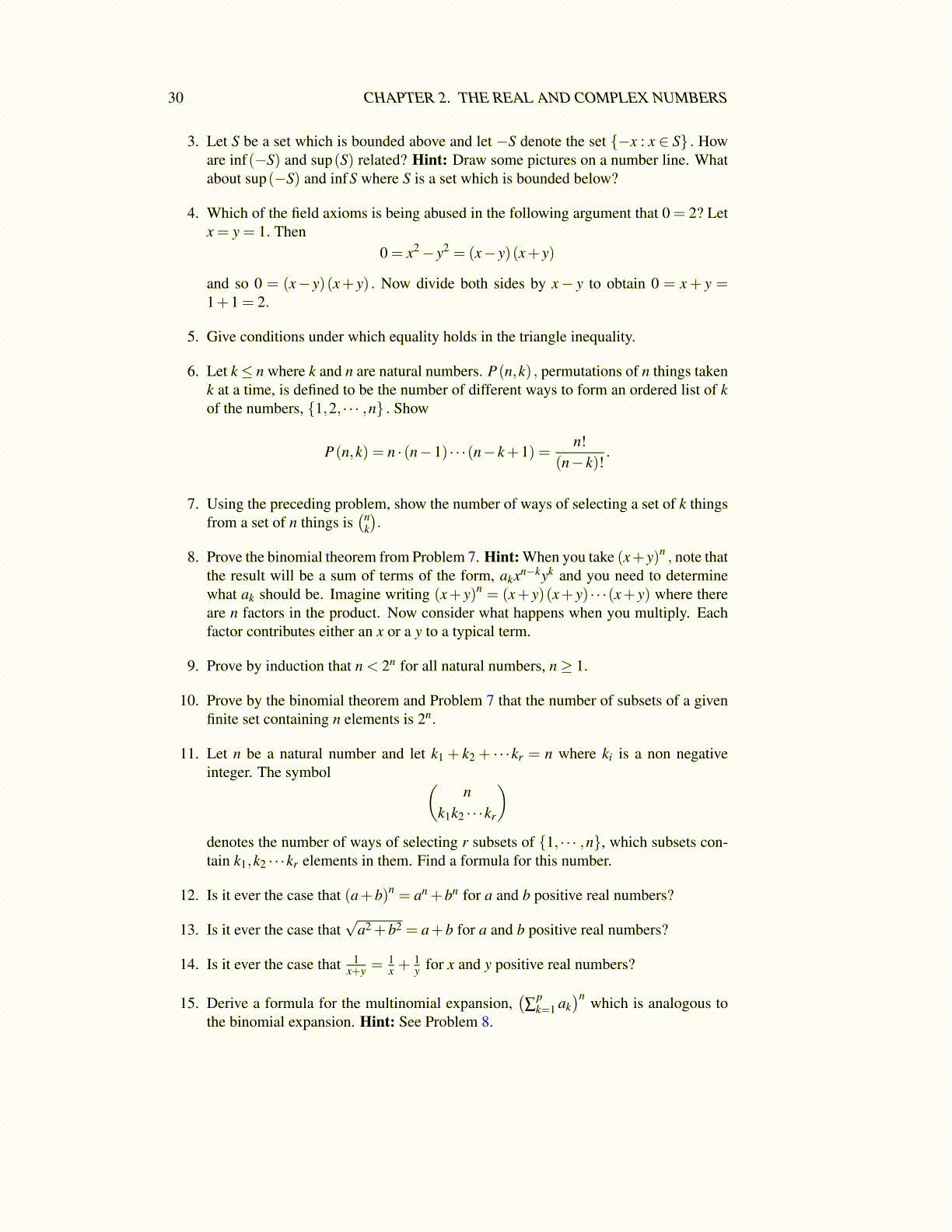
30 CHAPTER 2. THE REAL AND COMPLEX NUMBERS
9. Prove by induction that n < 2n for all natural numbers, n≥ 1.
10. Prove by the binomial theorem and Problem 7 that the number of subsets of a givenfinite set containing n elements is 2n.
11. Let n be a natural number and let k1 + k2 + · · ·kr = n where ki is a non negativeinteger. The symbol (
nk1k2 · · ·kr
)denotes the number of ways of selecting r subsets of {1, · · · ,n}, which subsets con-tain k1,k2 · · ·kr elements in them. Find a formula for this number.
12. Is it ever the case that (a+b)n = an +bn for a and b positive real numbers?
13. Is it ever the case that√
a2 +b2 = a+b for a and b positive real numbers?
14. Is it ever the case that 1x+y =
1x +
1y for x and y positive real numbers?
15. Derive a formula for the multinomial expansion,(∑
pk=1 ak
)n which is analogous tothe binomial expansion. Hint: See Problem 8.
16. Suppose a > 0 and that x is a real number which satisfies the quadratic equation,
ax2 +bx+ c = 0.
Find a formula for x in terms of a and b and square roots of expressions involvingthese numbers. Hint: First divide by a to get x2 + b
a x+ ca = 0. Then add and subtract
the quantity b2/4a2. Verify that
x2 +ba
x+b2
4a2 =
(x+
b2a
)2
.
Now solve the result for x. The process by which this was accomplished in addingin the term b2/4a2 is referred to as completing the square. You should obtain thequadratic formula,
x =−b±
√b2−4ac
2a.
The expression b2−4ac is called the discriminant. When it is positive there are twodifferent real roots. When it is zero, there is exactly one real root and when it equalsa negative number there are no real roots.
17. Find u such that− b2 +u and− b
2−u are roots of x2+bx+c = 0. Obtain the quadraticformula from this. 2
18. Suppose f (x) = 3x2 + 7x− 17. Find the value of x at which f (x) is smallest bycompleting the square. Also determine f (R) and sketch the graph of f . Hint:
f (x) = 3(
x2 +73
x− 173
)= 3
(x2 +
73
x+4936− 49
36− 17
3
)= 3
((x+
76
)2
− 4936− 17
3
).
2The ancient Babylonians were interested in these quadratic equations sometime before 1700 B.C.